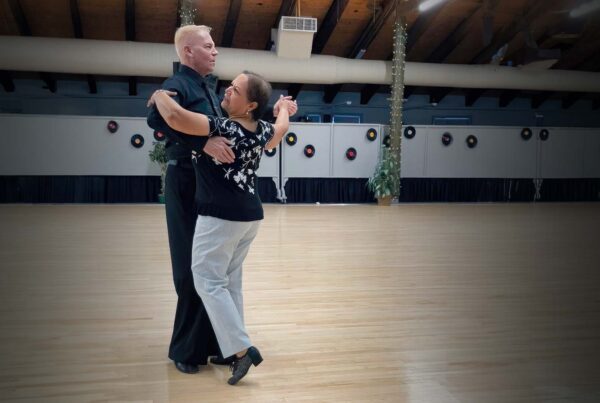We are passionate about sharing information and technique that can make you a better dancer, whether your interest is purely social dancing or you want to explore a more sophisticated skill level, like competition. So we’re pleased to announce a new way for dancers, no matter where they live, to access our teaching material.
Naturally, just as in any real-world setting, we can’t just give away all the information we’re sharing. Like any skilled teacher, it costs us a huge amount of time and money to gain this knowledge. Just last week we paid hundreds of dollars for insights from one of the world’s top teachers, so that we could update our own understanding and pass along new knowledge to our students.
Our new online membership enables anyone, even if they are not members of our classes, to gain access to special material that we consider “premium content,” either because of the extra time and effort we expended to put it together, or because of the amount of money we paid to gain that info or put it together for you. The good news is that our online membership is priced at a very reasonable $20 annually. That’s less than you probably pay for coffee in a month, and well below the cost to attend a single workshop with a guest teacher.
Hundreds of dancers from around the world subscribe to Delta Dance updates and read our articles. We appreciate all of you and want to make our special content available to you as well, which is why we created this online membership option. Please respect the huge effort that goes into creating our premium content by not sharing downloaded material with others or posting it online.
Existing Members
If you are an existing member with Delta Dance and your membership is current, you are already in the system and should have received an email notification about your account.
What to do if your membership isn’t working. Unfortunately we have heard from a few existing members that they can’t actually access protected content once logged in. Our tech support people are looking into this. In the meantime, you can resolve this by purchasing a membership using the “In Person” payment option. First log in with your membership, then go to Register as a Member. You won’t have to use a credit card but the system will generate a new transaction that seems to resolve the issue. Your purchase must, of course, be approved by an admin before you can use your membership but we make a point of doing those approvals as fast as possible so it should be active no later than 24 hours after completing that step.
When your current membership expires, you can use a credit card to update your membership account. That update will extend to your offline membership so that you’ll get the discounted rates for group classes.
What’s available now?
We have already posted some technical articles on specific dances or dance steps, and we’ll be adding many more of these in the coming year.
We’ve also uploaded a few choreography guides. These are detailed downloadable documents in PDF form that you can use to help you practice figures or design routines to dance to. Some dances are already organized into routines, with notes as to where you can easily break out of the given routine, while others show various groupings that you can combine with others in any order you like to create an interesting routine that you like.
Groupings vs Routines
When we were amateurs, we often came across dance schools that taught their group classes in the form of routines. The main issue is that within a couple of weeks after that dance finished, dancers forget where the different step patterns ended and a new one began. This makes it hard to break out of the routine. Dancing gets boring because you are only dancing the same sequence over and over. In contrast, the Grand Ballroom would teach the patterns in groups, combining 3-5 different figures together in a nice sequence so that we could use one group and then combine it with a different group and so on. We prefer this approach and use it for many of the dances. Routines are used for some dances, especially ones that are harder for students to think of in groups. Samba, for example, is hard to dance in a strictly lead/follow pattern, especially for beginners unfamiliar with the subtle differences in lead between, say, a Criss Cross Volta and Criss Cross Bota Fogo.
We are working on adding new choreography guides every month throughout the year.
What’s ahead for members?
We are working on additional technical guides that go beyond choreography and will post those as they are generated. These will include things like musicality charts and worksheets to help you with individual dances.
In addition, we’ve scheduled a series of videos that will provide valuable insight for anyone interested in improving their dancing skill. These short but powerful videos will be posted weekly throughout the year. You’ll find them quite useful and we think you’re going to really appreciate that content. We’ve committed several thousand dollars to production costs and will be filming in early April. Expect to see the first video in the spring.
Let us know if there is special members-only content you would like to see and we’ll consider it.













